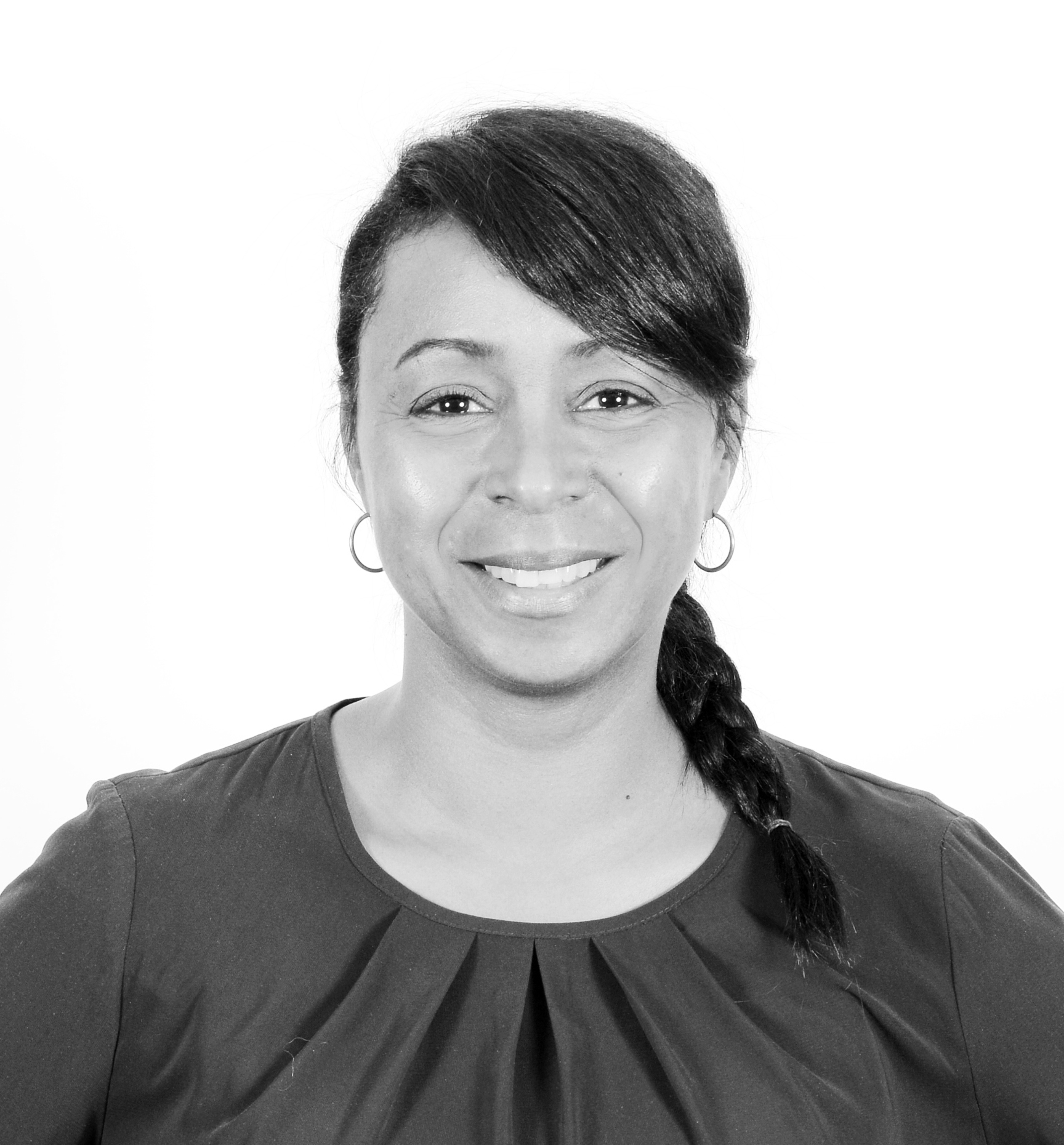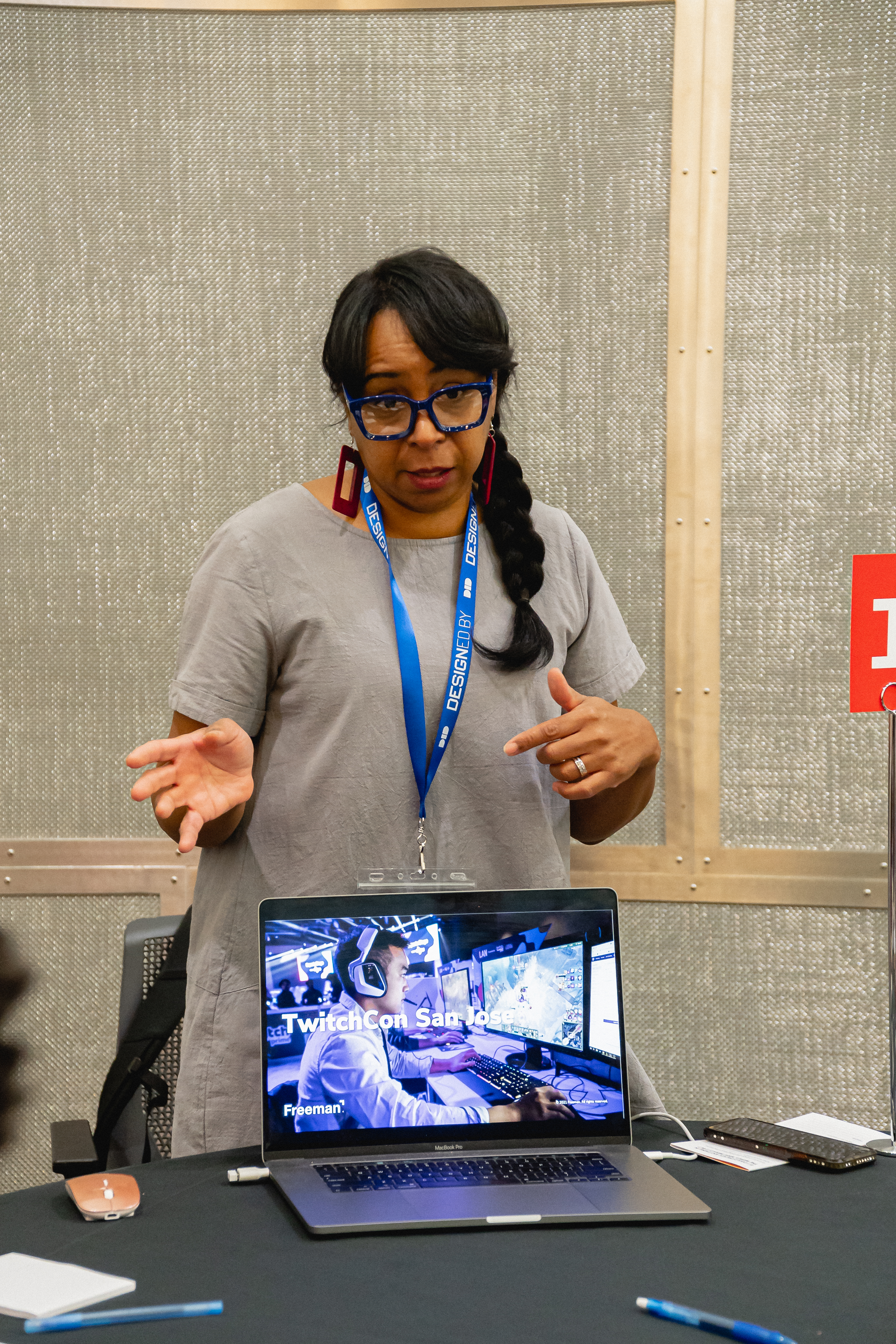Story
Meet Candace Charpentier

Meet Candace Charpentier, an Associate Creative Director at The Freeman Company and a DID member specializing in exhibit design. Candace played a major role in the successful planning and execution of the Designed By youth design fest and the Beats+Bites+Backgrounds networking experience.
Q: How did you get involved with DID? What has that meant for you and your work as a designer?
A: DID was one of the deciding factors in returning to The Freeman Company after layoffs due to Covid-19. Over the course of the pandemic, I had time to reevaluate what I wanted out of a career, and I realized the values of any company I worked for had to align with my own. I knew when life returned to “normal” I wanted to do work that would make a positive impact on the world.
So, when The Freeman Company asked me to rejoin the team not only as a designer but as their representative in DID, I jumped at the chance. I now get to do the creative work I love while also building a better future for Black creatives.
The company promised to give me everything I’d need to make sure that I could represent DID and make it successful. Freeman built funds into their budget to build up DID events and allow me to work on DID and my travel for events. I bring information back to Freeman to make sure everyone knows what we’re doing to help Black creatives.
DID has given me the courage to speak up when I would have stayed silent in the past. It has also created a community of people who are dedicated to making a positive impact on the world.
This is the best thing I’ve done.
Q: What drew you to design? Who inspired you to embark on this career path?
A: I’ve always had a big imagination, and as a child, I loved arts and crafts. My mother – an aspiring artist – always saw the importance of being imaginative and encouraged my “daydreaming” even when others did not see the value in it.
I was pushed by my father to pursue a business degree, but after seeing how unhappy I was, my mother supported my switch to Fine Arts.
When I understood design was about creative problem-solving, I was hooked. I had found a career that would value my imagination.
Q: Can you tell us more about your mother’s story as an aspiring artist?
A: Margaret Lopes was a shy, creative, soft-spoken woman with a beautiful imagination who had dreams of one day becoming an artist. She and my father came from the Cape Verde Islands off the West Coast of Africa. Sadly, her dream of perusing a degree in Art was crushed by racism.
During a tour of a local Art College in the early 1940s, she and her friend were ignored the entire time and at the end, the woman leading the tour told them, “Blacks don’t make good artists, and they would do better at a vocational school”. That moment crushed my mom and her dream. However, it didn’t stop her from encouraging me to follow mine.
My mom is my inspiration. Ever since she passed, I’ve kept photos of her above my work computer at home so I can look up at her and stay motivated.
Q: Did you face any obstacles in entering the field or once you were in the profession?
A: This is a difficult question because it’s not always obvious. For many years I’ve questioned why I wasn’t advancing at the pace of those around me even though I always received positive feedback.
I grew up in Taunton, Massachusetts and my family was from Cape Verde. Taunton was a factory town, not very diverse. Middle-class Blacks living in lower-income white communities. Growing up there was difficult. My six sisters and I were some of the only non-white students at our school.
My first-grade teacher sent me to the back of the classroom for being disruptive most days, to the point I had to repeat second grade. Another teacher later in grade school would keep my sisters and I from receiving classroom incentives like pizza parties and trips to the bowling alley. It’s crazy, but I actually ran into the same teacher as an adult at the grocery store, and this teacher apologized for how she treated us.
I remember I wanted to join an after-school art club in middle school, but my teacher told me I was not artistic enough to join. It crushed my dreams of being a fashion designer from a young age.
But I was raised to work, work some more, and keep working despite all the barriers. You just have to keep pushing until you get somewhere.
Q: What advice would you give an aspiring Black designer?
A: Don’t stay in one position too long if you are not advancing. Look for another job at the level you know you should be at. I’m not saying quit your job tomorrow but what I am saying is “stay ready” - keep your portfolio and resume up to date and keep your LinkedIn job alerts on. If you are not valued where you are, find a place that will value you.
Q: Tell me more about Beats+Bites+Backgrounds (BBB). Planning, outcomes, anything you’d like to share from the experience.
A: I’m quiet and sometimes networking events are hard. But I wasn’t worried walking into BBB because most everyone looked like me and had similar experiences. Sheri Crosby Wheeler came up with the name and it instantly felt right for a Black event. It wasn’t stuffy, corporate, or just another networking event. It felt real and authentic.
I met a young woman who was a Graphic Designer and we talked about being quiet, struggling to show up how you want to in the workplace. We’ve all developed our armor to get through the day and shedding it in a safe shared place makes us feel lighter.
Sometimes we use words to mask what we don’t know, but we know the right words to say. But saying what we know how we would typically say it allows others the opportunity to drop any mask they may be putting up. It was so nice to be in the presence of other Black creatives and know I don’t have to code switch; I didn’t have to go out of my way to make anyone else comfortable with my presence.
Q: What hopes do you have for DID and its impact on Black creatives in the industry?
A: I hope DID helps companies reflect on their hiring and promoting practices. I want companies to ask why their workforce doesn’t look like the people they serve and come up with solutions to fix it.
I look forward to DID growing into a resource for companies to turn to when they are looking for solutions, job boards, internships, partnerships with HBCUs, and youth programs to create the designers of tomorrow.


